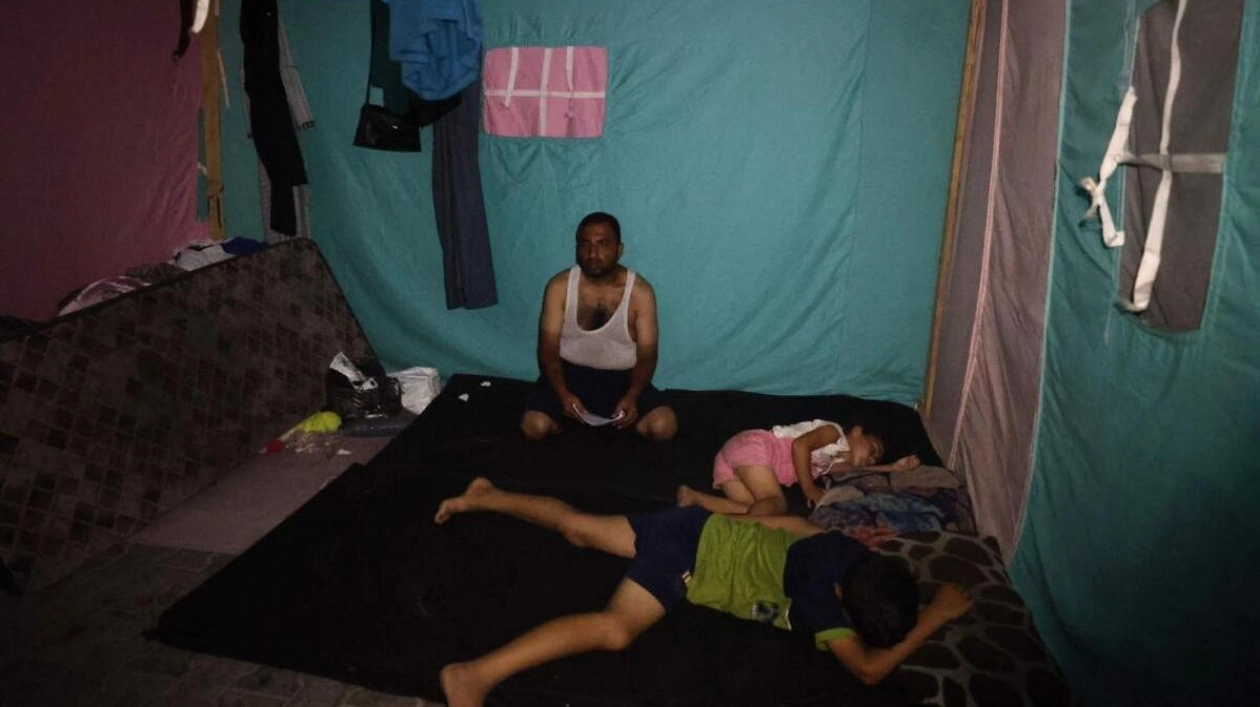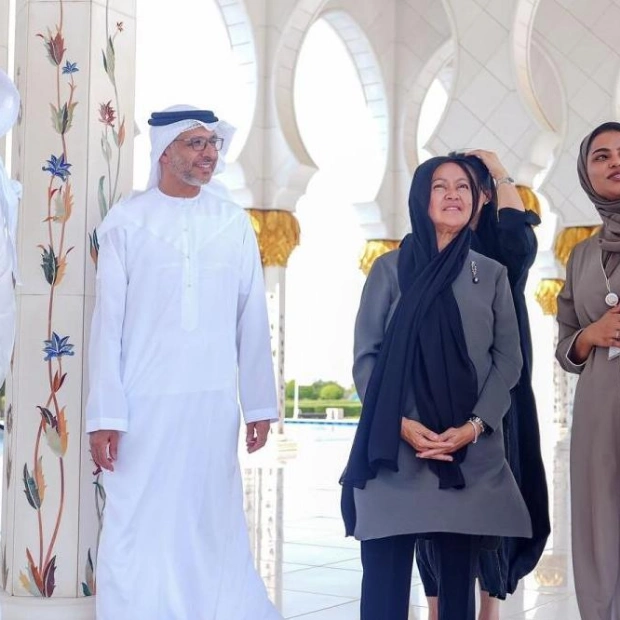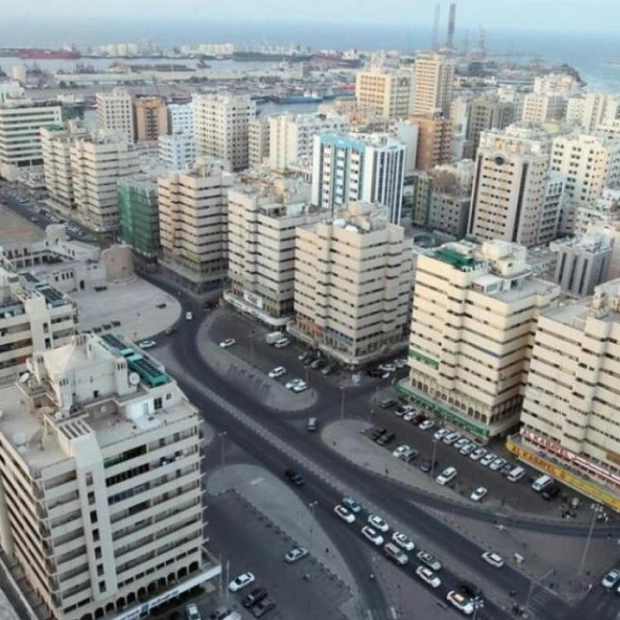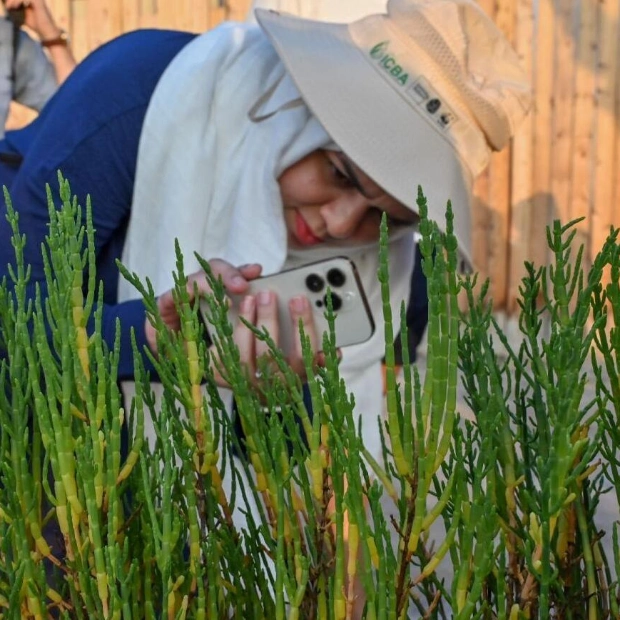In Gaza, the sky is filled with threat. Along with the missiles that bombard schools and shelters, the harsh sun has made the summer unbearable for those fighting to survive in a devastated landscape of ruins and debris. Samaher al-Daour sometimes wishes she had died in the early days of the Israel-Hamas conflict instead of witnessing her son, who lost a leg during the fighting, suffer through the intense heat.
"The situation is terrible," said Daour, 42, as she sat next to her 20-year-old son Haitham in their stifling tent in the southern city of Khan Younis in June. "Inside and outside the tent, it's unbearably hot during the day," she explained in a phone call. "We go to the sea, but it's still very tough."
Haitham lost his leg in February during an Israeli airstrike on a school operated by the United Nations Relief and Works Agency for Palestinian Refugees (UNWRA) in the Maghazi refugee camp in central Gaza. Now, the oppressive heat is hindering his recovery, causing him to sweat constantly and aggravating his injured leg, causing it to swell.
"He is suffering because of this," said Daour. After ten months of war, nearly all of Gaza's 2.3 million residents are displaced, living in tents or overcrowded shelters with almost no electricity and scarce clean water. They are hungry and weak, unable to bathe and struggling to sleep in their sweltering shelters. Food is spoiling in the heat, attracting insects and flies to crowded camps, where people repeatedly displaced now face risks of heatstroke and other heat-related illnesses.
Since April, Gaza has endured several periods of extreme heat, with temperatures soaring to about 40 degrees Celsius (104 degrees Fahrenheit) in that month. Throughout August, temperatures averaged a high of 34 C (93 F), according to U.S. private forecaster AccuWeather. In late June, the World Health Organization warned that the scorching heat could worsen health issues for the millions displaced, alerting that a public health crisis was imminent due to the shortage of clean water, food, and medical supplies.
The heat is also complicating matters for aid agencies, already hindered by airstrikes, fighting, and damaged infrastructure. "It would be fair to say that most humanitarian responders, including donors, haven't fully considered the dangers of heat and extreme heat," said Paul Knox Clarke, principal at ADAPT, a climate and humanitarian initiative. "The horrors" humanitarian organizations address in crises often consume too much attention, preventing them from addressing additional challenges, such as adapting to climate change effects during relief operations.
"It's not unprecedented, but it's not part of the usual approach," he noted. "It's making everything more difficult," said Prabu Selvam, medical officer for the Americares relief agency, highlighting the challenge of transporting medicines that require refrigeration. Due to Israeli restrictions, aid trucks often wait in the sun for hours before being cleared.
"Of course, it's going to affect the communities, especially since the cold chain medicines are critically needed," Selvam said. Nearly 40,000 people have been killed and around 92,000 injured since the Israeli army began its assault on Gaza, according to the Palestinian health ministry. Israel launched its offensive after Hamas-led militants invaded Israel on October 7, killing about 1,200 people and capturing around 250 hostages, according to Israeli figures. The offensive has destroyed homes, schools, and vital infrastructure like hospitals and clinics. Israel has severely limited the flow of food and aid into the Strip, and humanitarian agencies have been warning of the risk of famine. Now, the summer's extreme heat has added another layer of suffering.
Recent years have seen a series of deadly heatwaves hit the Mediterranean region, and scientists attribute these dangerous heatwaves to climate change. Save the Children is already adjusting its operations in Gaza, said Fadi Dweik, a climate resilience expert at the charity. Typically, the agency would focus on providing mental health services and educational support as a first response, but now it has prioritized delivering water and sanitation services and nutrition and health support.
"The conflict has made us consider details and implement alternatives we hadn't thought of before," Dweik said. "For the first time, environmental factors are a priority because we can't ignore them despite the war and destruction." The heat is also a concern for Sabah Khames. The 62-year-old fled her home in Rafah near the Egyptian border in May and now lives in a tent with 18 other relatives. "The tent is a cramped caravan made entirely of sheet metal. It's like a sauna inside," she said in a phone interview. "Sometimes, I can barely catch my breath."






